#03: Tutorial design
This post was originally written in February 2018. At the time the game was still called Hook, Line and Thinker
Teaching through play
I don’t explain anything to the player, including the controls. All actions are done by pressing one of the 7 buttons visible on the screen at all times. You never need to press more than one button at a time and when a button won’t do anything it gets disabled (greyed out).
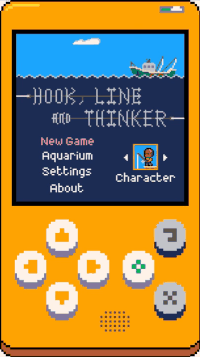
This is a puzzle game so I want to encourage the player to get into the mindset of working things out for themselves. The first few levels have been iterated a lot to set up scenarios that force the player to discover how a gameplay mechanic works.
A puzzle is something you initially don’t know how to solve, so every level is arguably a tutorial on how to solve itself. As players progress they get a deeper understanding of mechanics and how they relate to each other, even learning some patterns of layout or movement they can use as tools in multiple levels. There are a number of reasons that motivate level design and one of them is to teach the player something specific, or rather encourage them to work it out for themselves. Here are a few of those levels.
Movement and win condition
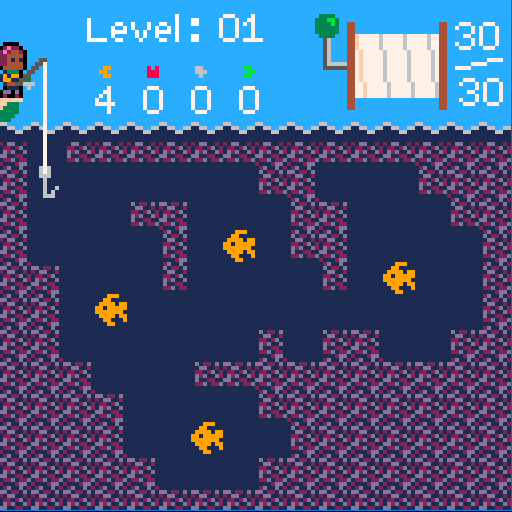
In the first level players discover how to move the hook around (push the arrow buttons) and reel it back in (push the circle button). They’ll probably also realise that they can’t cross their own line or move through purple blocks, and might notice that they have a limited line length (shown by the reel in the top right). Once they move into a fish they’ll find that they can’t move again and must reel it in. If they’re really observant they’ll also notice the counters along the top that count down as they catch the fish. The curious ones might also try pressing the undo button (backwards pointer) or pause menu button (cross).
Crabs and debris
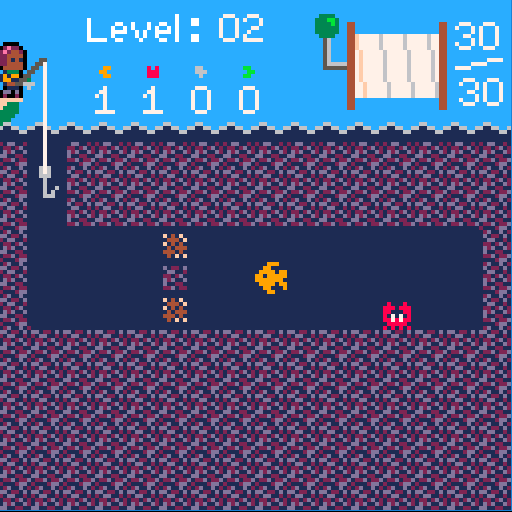
In level two the player is confronted with brown blocks they haven’t seen before. They can’t do anything other than try and move through them, which they can. Well there’s a fish right behind the blocks and they solved the previous level by catching fish, so they’ll probably try to reel it in, only to discover they can’t pull fish through brown blocks and will drop them instead. A lot of players will try pulling the fish through the other brown block, just in case. When that fails too there’s nothing left to do but approach the crab, which is when players find that they can reel crabs in too and that crabs smash brown blocks. The observant ones will notice that doing so reduced their line length by 5.
Squid, ink and how to get out of an unsolvable state
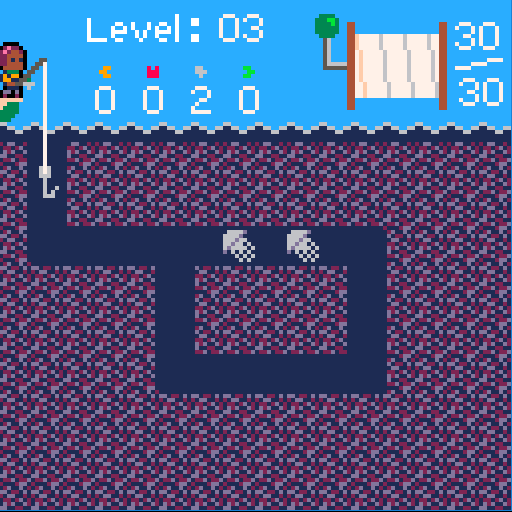
Level 3 introduces the squid and ink mechanics and is the first puzzle where the player can get it into an unsolvable state. After catching the first squid they see a trail of 5 ink tiles, which it turns out they can move through but can’t pull creatures through. The level is now unsolvable, so players will eventually try hitting the pause button and finding the restart menu item, or try the undo button and go back to a solvable state. Some players pre-emptively solve this by getting the rear squid first without knowing what will happen. I might iterate some more on this one, but then again the interaction with ink is simple and easily found later.
Jellyfish and skeletons
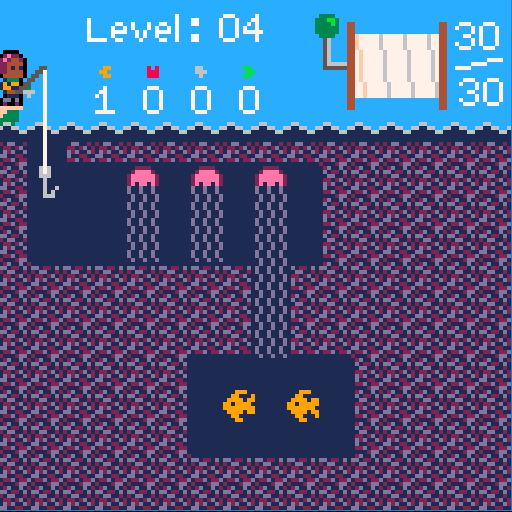
Fish, I remember those! Here players will find they can’t move through or catch jellyfish, but they can move through their stingers. Trying to pull one of the fish through will kill it, blocking the path with a skeleton. There’s nothing left to do but try and catch that, only to discover that skeletons cut stingers. Observant players will realise that they don’t necessarily have to catch every creature in a level, the counters at the top describe the win condition.
Sea sponges
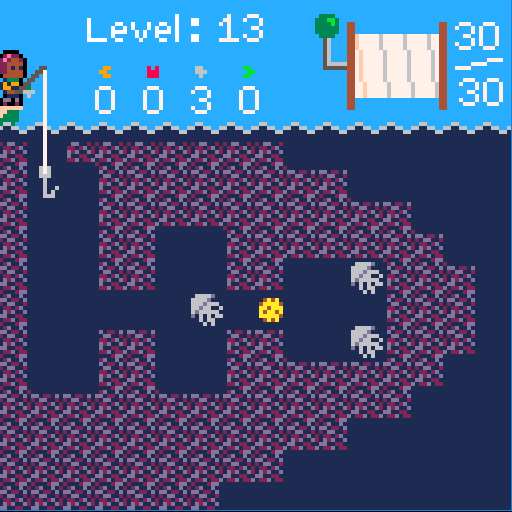
Not all mechanics are introduced immediately. After the fish, crab, squid and jellyfish are introduced there are several levels using combinations of those mechanics to reinforce understanding and let the player start solving ‘real’ non-tutorial puzzles. Some smaller mechanics / patterns are taught in those. This is an example of a later level that introduces the sea sponge, which can absorb a single ink tile. It also features the pattern of two squid in a 3x3 cave which is used a few times with different squid and entrance positions.
Curious Fishing
An aquatic puzzle game
| Status | Released |
| Author | RhythmLynx |
| Genre | Puzzle |
| Tags | blocks, chiptune, fantasy-console, Fishing, PICO-8, Pixel Art, Retro, Sokoban, underwater |
| Languages | Arabic, German, English, Spanish; Castilian, French, Italian, Japanese, Korean, Portuguese (Brazil), Russian, Chinese, Chinese (Simplified), Chinese (Traditional) |
| Accessibility | Configurable controls |
More posts
- #15: Why development took so longNov 28, 2022
- #14: Devlog updates and launch statsNov 28, 2022
- #13: Release!Nov 28, 2022
- #12: Localizing a low resolution pixel art gameNov 28, 2022
- #11: OrganizationNov 27, 2022
- #10: Audio techNov 27, 2022
- #09: Interview with sound designer Andrew DoddsNov 27, 2022
- #08: (Work)flow: artNov 27, 2022
- #07: Design iteration: player movementNov 25, 2022
- #06: UndoNov 25, 2022

Leave a comment
Log in with itch.io to leave a comment.